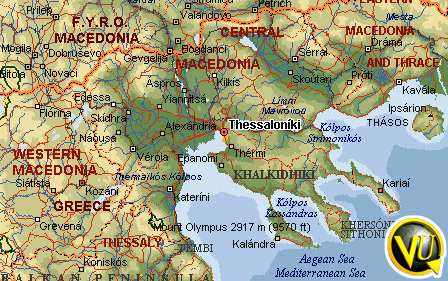
HOME Information Request Form Registration Form Conditions
| Spanish French German Italian Russian Chinese Japanese Greek Portuguese Summer Camps |
||
|
|
GREECE : Thessaloniki
Tuition Programs
|
Starting Dates
Closing Dates
Options Available
|
||||||||||||||||||||||||||||||||||||||
|
Costs Currency Converter The displayed prices are in Euros (€): To be paid in Canadian dollars when final payment is maid: Thank you
|
|||||||||||||||||||||||||||||||||||||||
Hotel accommodation:The hotels the school is able to offer are 2 to 3 stars hotels, standard level. Meals are not included. 2 stars 3 stars |
|||||||||||||||||||||||||||||||||||||||
Town information's
Greek history and culture are recognized by the rest of the world. The choice of Thessaloniki as cultural capital was not the result of right decisions, but truly a rewarding of her history and her values. This might need some explanation. For the Greeks culture means much more than what it means for other nations. Culture is not just some old buildings or cultural activities, it is a way of life, a way of thinking Thessaloniki, the second largest city in Greece with a population of 1,000,000 inhabitants, is one of the oldest cities in Europe. It stretches over twelve kilometers in a bowl formed by low hills facing a bay that opens into the Gulf Thermaikos. It was founded about 315 B.C., on a site of old prehistoric settlements going back to 2300 B.C., by Cassander, King of Macedonia, and was named after his wife, Thessaloniki, sister of Alexander The Great. Since then, Thessaloniki has become the chief city of Macedonia and its most important commercial port. In Roman times it was visited by Saint Paul, who preached the new religion, and who later addressed his two well-known epistles (the oldest written documents of Christian literature) to the Christians of Thessaloniki. The Byzantine times
Cultural contribution
MonumentsAmong the numerous monuments of particular interest in the city are those from the Roman period, the Modern Architecture
Cultural lifeIn addition to the University, there are numerous institutions that contribute to the academic and cultural life of the city. Among them are the Macedonian University, The Archeological and Byzantine museums, the Folklore museum, the State Conservatory, Theatres and Orchestras, the Society of Macedonian Studies, the Institute for Balkan Studies, and other cultural and artistic organizations. Today!Today Thessaloniki is a thriving city and one of the most important trade and communications centres in the Mediterranean. This is evident from its financial and commercial activities, its port with its special Free Zone, which provides facilities to the other Balkan countries, its international airport, its important industrial complex, its annual International Trade Fair, etc. Weather forecast |
|||||||||||||||||||||||||||||||||||||||
